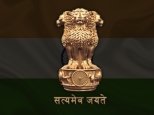- Identify Your Business Type: Decide if you want to start a manufacturing unit, wholesale business, retail store, boutique, online clothing store, or sustainable clothing brand.
- Study the Market: Analyze competitors, target audience, latest fashion trends, and pricing strategies.
- Investment Planning: Estimate capital requirements for production, inventory, marketing, and operations.
4 easy steps to PAN Application
-
Fill up the Form.
-
Submit the documents.
-
Pay only professional fee.
-
Get your PAN Application.
PROCESS OF STARTING A GARMENT BUSINESS
-
Decide the Type of Garment Business
There are multiple garment business models you can choose from such as Manufacturing-Based Garment Businesses, Retail-Based Garment Businesses, Online Garment Businesses, Custom and Niche Garment Businesses etc.
-
Conduct Market Research
- Identify your target audience (kids, men, women, corporate, ethnic, casual, sportswear, etc.).
- Analyze competitors and pricing strategies.
- Understand the latest fashion trends and Choose whether to cater to mass-market, mid-range, or premium segment.
-
Decide on Business Model & Legal Registration
- Choose a suitable business structure like Register as Sole Proprietorship, LLP, or Private Limited Company.
- GST registration, Trademark Registration, Import Export Code, MSME, BIS Certification etc.
-
Arrange Capital & Funding
- Start with personal savings or take a business loan from banks.
- Apply for government subsidies like PMEGP, Mudra Loan, MSME schemes or can Seek investors or partnerships if scaling the business.
- Consider crowdfunding for unique or sustainable fashion businesses.
-
Select a Suitable Location
- For retail store, choose a high-footfall area and For manufacturing, rent or buy a factory space in an industrial area.
- If running an online business, start from home and scale as demand increases.
-
Source Raw Materials & Machinery
- Identify reliable fabric suppliers and wholesalers (cotton, silk, polyester, denim, etc.).
- Arrange stitching, cutting, and embroidery machines for production.
- If outsourcing, partner with job workers or garment manufacturers.
-
Hire Skilled Workforce
- Hire tailors, designers, pattern makers, and machine operators for manufacturing.
- For retail businesses Recruit sales executives and For e-commerce, hire digital marketing experts, website developers, and logistics managers.
-
Design & Develop Product Line
- Focus on trendy and quality designs to attract customers.
- Create samples and prototypes before mass production.
- Maintain quality control to ensure durability, colorfastness, and comfort.
-
Set Up Sales & Distribution Channels
- For retail: Open a showroom or sell through multi-brand outlets.
- For wholesale: Partner with distributors, local retailers, and supermarkets.
- For online: Sell via Your own website (Shopify, WordPress); Marketplaces like Amazon, Flipkart, Myntra, Ajio; social media (Instagram, Facebook, WhatsApp Business)
-
Marketing & Branding Strategy
- Online Presence: Create a website, list on Google My Business and Create a brand identity (logo, packaging, and labels).
- Online & Offline Promotions: use social media (Instagram, Facebook, YouTube) for promotions and Run ads on Google and Facebook to reach a larger audience and Offer discounts, combo deals, and loyalty programs
- Collaborations: Collaborate with influencers and fashion bloggers for more visibility.

TYPES OF GARMENT BUSINESS
MANUFACTURING-BASED GARMENT BUSINESSES
These businesses focus on producing garments and selling them in bulk to retailers, wholesalers, or brands.
- Garment Manufacturing Unit – Producing garments in bulk for brands or retailers.
- Export House – Manufacturing garments specifically for export to foreign countries.
- Job Work Unit – Providing stitching, embroidery, dyeing, or finishing services to other garment manufacturers.
RETAIL-BASED GARMENT BUSINESSES
These involve selling garments directly to customers.
- Retail Clothing Store – A physical store selling ready-made garments.
- Branded Garment Franchise – Selling garments of a well-known brand under a franchise model.
- Boutique – A small shop selling unique or designer garments, often customized.
- Factory Outlet Store – Selling surplus, slightly defective, or previous season’s garments at a discount.
ONLINE GARMENT BUSINESSES
These businesses operate through e-commerce platforms.
- Own E-Commerce Store – Selling garments through a dedicated website.
- Marketplace Seller– Selling garments on third-party platforms (Amazon, Flipkart, Myntra, etc.)
- Dropshipping Business – Selling garments without maintaining inventory; orders are fulfilled by third-party suppliers.
- Print-On-Demand (POD) Clothing Business – Selling customized T-shirts, hoodies, and other garments with unique prints.
CUSTOM AND NICHE GARMENT BUSINESSES
These businesses cater to specific customer needs or markets.
- Ethnic Wear Business – Selling sarees, lehengas, kurta sets, and other traditional outfits.
- Kidswear Business – Specializing in clothing for children.
- Sportswear & Activewear Business – Selling gym wear, sports jerseys, and fitness clothing.
- Corporate Uniform Business – Manufacturing and supplying uniforms for schools, hospitals, hotels, and corporates.
- Lingerie & Innerwear Business – Selling undergarments, shapewear, and nightwear.
- Maternity & Baby Wear Business – Selling pregnancy-friendly outfits and newborn clothing.
- Sustainable & Organic Clothing Business – Focusing on eco-friendly and organic fabric clothing.
FASHION DESIGN & CUSTOM APPAREL
Businesses focusing on creativity and customization.
- Fashion Design Studio – Designing and selling exclusive fashion garments.
- Tailoring & Alteration Services – Custom stitching and garment fitting services.
- Handmade or Handloom Clothing Business – Selling handcrafted, handwoven, or embroidered clothing.
WHOLESALE & RENTAL/RESALE CLOTHING BUSINESS
- Domestic Wholesale Business – Selling to local retailers, boutiques, and shops.
- Export Wholesale Business – Supplying garments in bulk to international buyers.
- Fashion Rental Business – Renting designer wear, wedding dresses, or costumes.
- Second-Hand & Thrift Store – Selling pre-owned branded or vintage garments.
REQUIREMENT OF GARMENT BUSINESS
BUSINESS PLAN & MARKET RESEARCH
CAPITAL & FUNDING
- Investment Required: Small-scale business: ₹2 – 10 lakhs; Medium-scale business: ₹10 – 50 lakhs; Large-scale business: ₹50 lakhs – ₹5 crores
- Funding Options: Self-funding or Family Investment, Business Loans from Banks (MSME Loans), Government Schemes like Mudra Loan, Angel Investors (for online fashion startups)
LOCATION & INFRASTRUCTURE
- Manufacturing Unit Requirements: A factory space (1000 – 5000 sq. ft.) for machines, cutting tables, and raw materials. Proper ventilation, electricity, and worker facilities.
- Retail Store Requirements: A commercial shop in a high-footfall area or a mall.
- Online Business Requirements: A warehouse or home-based storage for inventory.
MACHINERY & EQUIPMENT
- Depending on your business type, you may need:
For Manufacturing: Sewing machines (basic & advanced), Cutting tables & machines, Fabric dyeing, printing & embroidery machines, Steam iron & packaging tools - For Retail: Display shelves, trial rooms, POS system
- For Online Business: Professional cameras for product photography, Computers for designing & online management
RAW MATERIAL & SUPPLIER SOURCING
- Fabric Sourcing: Choose suppliers for cotton, linen, polyester, silk, denim, and sustainable fabrics.
- Trims & Accessories: Buttons, zippers, labels, tags, and packaging materials.
- Reliable Vendors: Get bulk fabric suppliers from Delhi, Surat, Tiruppur, Ludhiana, Jaipur, or Mumbai.
WORKFORCE & SKILLED LABOUR
- Manufacturing Unit: Tailors, pattern makers, machine operators, finishing & quality check staff.
- Retail Store: Sales staff, cashiers, and customer service personnel.
- E-commerce Business: Website designers, marketing team, and logistics support.
BRANDING & MARKETING
- Brand Name & Logo: A catchy and unique identity.
- E-commerce Website & Social Media Presence: Create a store on Shopify, WooCommerce, or marketplaces like Amazon & Flipkart.
- Influencer & Digital Marketing: Promote through Instagram, Facebook, and Google Ads.
- Offline Promotion: Advertisements in newspapers, banners, and local events.
DISTRIBUTION & LOGISTICS
- For Retail Business: Partner with local delivery services.
- For Online Business: Tie up with courier companies like Blue Dart, Delhivery, DTDC, or India Post.
- For Wholesale Business: Have a strong B2B distribution network to supply to retailers.
DOCUMENTS FOR GARMENT BUSINESS
FIRE & SAFETY CERTIFICATE
- Fire & Safety Certificate, also known as a Certificate of Conformity to the Requirements of Fire Safety
- Verifies that a building meets fire safety regulations and standards, ensuring the safety of workers and the premises.
PAYMENT GATEWAY INTEGRATION
- Required to sell on platforms like Amazon, Flipkart, Meesho, and Myntra.
- Required for accepting online payments on your e-commerce website like Paytm, Razorpay, Stripe, etc.
BUSINESS AGREEMENTS
- Vendor agreements for raw material suppliers.
- Retailer or distributor agreements if selling through wholesalers.
- Designer contracts for exclusive fashion design partnerships.
UDYAM (MSME) REGISTRATION
- Get MSME/Udyam Registration for government subsidies, business loans, and tax benefits.
TRADE LICENSE
- Required for physical retail stores, boutiques, and manufacturing units.
- Apply at your local municipal office for legal business operation.
SHOPS & ESTABLISHMENT LICENSE
- Needed if you plan to set up a physical store and employ workers.
- Issued by the Labour Department of the State Government.
FACTORY LICENSE
- Needed if setting up a large-scale garment manufacturing unit.
- Issued by the State Government.
POLLUTION CONTROL CERTIFICATE
- Required from the State Pollution Control Board for businesses that involve fabric dyeing, printing, or chemical processing.
BIS CERTIFICATION
- If manufacturing garments, you may require BIS (Bureau of Indian Standards) certification for quality assurance.
TRADEMARK REGISTRATION
- If you are launching a unique clothing brand, register a trademark to protect your brand name & logo.
GST REGISTRATION
- Register for Goods and Services Tax (GST) if your annual turnover exceeds ₹40 lakh (for normal states) or ₹20 lakh (for special states).
- Required for wholesale, retail, and online clothing businesses.
DOMAIN REGISTRATION & WEBSITE LEGAL POLICIES
- Purchase a domain name for an online store.
- Draft privacy policy, return & refund policy, terms & conditions for your website.
Why us
Recognized by Govt. of India
End-to-End Financial & Compliance Solutions
ISO Certified
Data Security & Confidentiality
Trained & Professional Team
On Time, Every Time - We Respect Deadlines
Technology Driven
Transparent & Ethical Practices
Support for Startups & MSMEs
Compare with other Garment Business
Pick a Business Structure That Works Best For Your Business
- Initial Investment
- Land/Space Requirement
- Technical Expertise
- Government Regulations
- Profit Margin
- Market Demand
- Risk Factor
- Time to Break Even
- Labor Requirement
- Sustainability
- Technology Usage
Here are some Frequently Asked Questions about Garment Business
What Are the Best Locations to Start a Garment Business in India?
For Wholesale & Manufacturing:
- Delhi (Gandhi Nagar, Chandni Chowk), Mumbai (Dharavi), Ludhiana, Surat, Tiruppur, Jaipur.
For Retail & Boutiques:
- Mumbai, Delhi, Kolkata, Bangalore, Hyderabad, Chennai, Ahmedabad, Pune.
Where Can I Source Raw Materials for My Garment Business?
Wholesale Fabric Markets in India:
- Surat & Ahmedabad – Synthetic, polyester, and silk fabrics.
- Ludhiana & Tiruppur – Cotton, woolen, and hosiery fabrics.
- Delhi & Mumbai – Mixed fabrics and designer textiles.
- Kolkata & Jaipur – Handloom, ethnic, and printed fabrics.
International Fabric Sourcing:
- China, Bangladesh, Vietnam, Indonesia, Turkey.
How Profitable Is the Garment Business?
Retail & Wholesale Profit Margins:
- Retail Markup – 30-200% (depends on niche & brand).
- Wholesale Margin – 10-40% (bulk sales).
Manufacturing Profit Margins:
- Basic clothing – 15-40%
- Luxury & designer clothing – 50-200%
What Are the Challenges in the Garment Business?
- High Competition – Many players in the market.
- Seasonal Demand – Fashion trends keep changing.
- Quality Control Issues – Fabric defects, color fading, etc.
- Inventory Management – Overstocking or understocking problems.
- Logistics & Delivery Costs – For online and export businesses.
What Is the Future of the Garment Industry?
Future Trends in the Garment Business:
- Inventory Management – Overstocking or understocking problems.
- E-commerce growth – More brands selling online.
- Sustainable & eco-friendly clothing – High consumer demand.
- AI & Virtual Try-On Technology – Online shopping enhancements.
- Customization & Personalization – On-demand printing & tailoring.
Leave Your Accounting to Us and File GST Accurately.
Save time, money, and taxes with our AI based Business softwares and expert accountants.
















